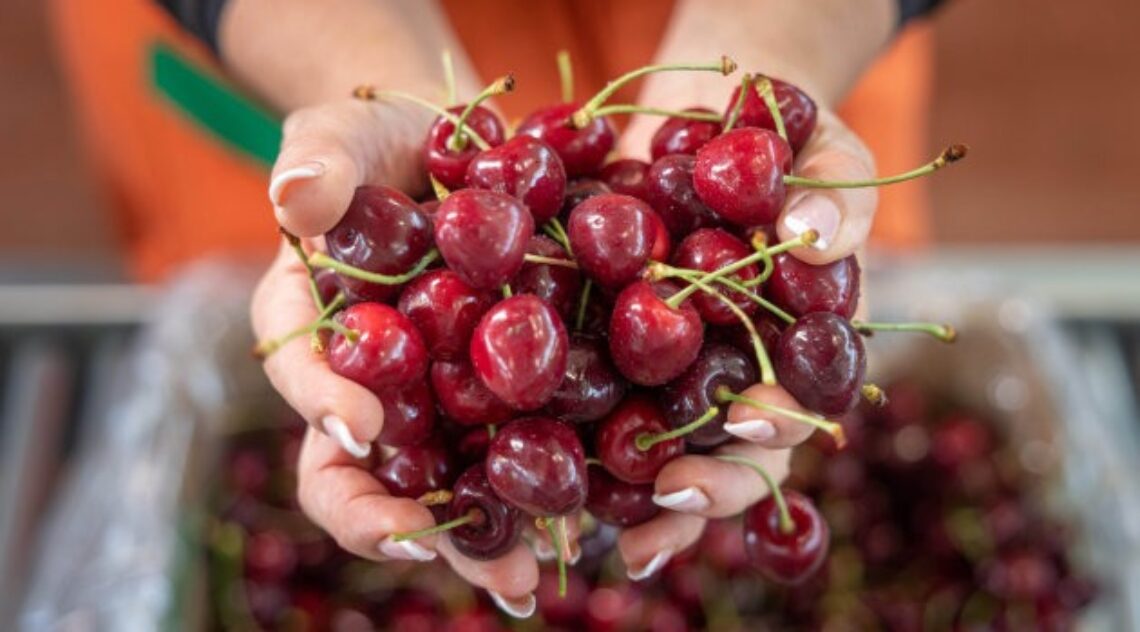
TOMRA Food has launched LUCAi for the InVision2 cherry grading platform, using pre-trained models built on data and knowledge collected in multiple regions across the world for the past five years.
The continued rise in global demand for cherries puts packhouses under pressure to process increasingly large volumes while maintaining the high quality of their product.
Significant variations in the infeed product, disruptive weather events, the careful handling that cherries require, and labour availability are some of the major challenges packers face as they strive to meet the demand and customers’ product specifications.
The new LUCAi technology for the InVision2 grading platform allows them to optimize pack-out, increase yield and efficiencies, and ensure top-quality cherries with unparalleled accuracy in detecting defects. The technology also features a new user-friendly interface to simplify operation.
A substantial leap forward
The new LUCAi platform features the latest development of TOMRA’s Deep Learning technology, which uses pre-trained models to teach computers how to process data, such as complex patterns in photos, to achieve unprecedented grading precision. This technology was developed by a team of industry-leading scientists, engineers, researchers and experts, and applied successfully to blueberry and apple applications – on the KATO260 and most recently on the Spectrim X platforms respectively.
TOMRA Food’s engineers combined this expertise with their in-depth knowledge of cherry sorting, grading and packing to extend the advantages of LUCAi technology to the InVision2 grading platform.
TOMRA Food global category director for cherries Benedetta Ricci Iamino said, “LUCAi for InVision2 represents a substantial leap forward in grading accuracy, enhanced pack-out returns while reducing food waste thanks to exceptionally low good-in-bad and bad-in-good ratios, and higher productivity.
The LUCAi platform allows TOMRA customers to process cherries at a higher speed (+15 per cent kg per hour per lane) while optimizing defect sorting. It helps them to achieve higher returns per kg packed than any other technology available today, reducing their food waste, and enhancing their reputation for consistent quality in the markets. Another advantage is its new interface, which is very user-friendly, making it easy and quick for operators to adapt to the technology.”
The intelligent InVision2 grading platform with LUCAi allows packhouses to maximise pack-out results, enhancing pack quality and consistency while minimising waste and increasing premium yields.
It uses TOMRA’s Deep Learning technology to identify edge cracks, pacman cherries (half cherries), open sutures, cosmetic blemishes and stem pulls. It also improves detection of spurs, cracks and all defects around the stem area with unparalleled accuracy.
LUCAi has been trained on vast amounts of data collected from cherry growers across the world and, thanks to its “intelligence”, it is able to recognise patterns on the cherries regardless of their varieties, quality and entry conditions, preventing accidental downgrades of good fruit while eliminating slowdowns due to manual grading of bad fruits – all of this in the most consistent and efficient way.
The advanced software allows the grading platform to process high throughput, resulting in higher productivity, while maintaining consistency across seasons, batches, varieties and operators. This is a major advantage for cherry packers, for whom product quality is where their greatest returns come from – but also the biggest operational challenges.
Ready-to-use and future-proof
LUCAi for the InVision2 cherry grading platform uses pre-trained models built on a wealth of data and knowledge collected in multiple regions across the world for the past five years.
“It is important to understand that AI technology is an empty box you need to fill; without a large amount of quality data, it goes nowhere. That’s where LUCAi stands out from any other AI platform available in the industry: it comes with vast amounts of data that TOMRA has collected over more than 5 years, building pre-trained models using real images of cherries that our customers pack, continuously developing LUCAi’s ‘brain’, which becomes smarter and smarter in the process. This means that it is ready ‘out of the box’, able to deliver its superior sorting and grading performance as soon as it is installed at our customers’ operation,” said Ricci Iamino.
TOMRA’s LUCAi technology platform not only comes ready to perform with pre-trained models, but it can also continue to evolve as it collects more data when operating at the customer’s operation and keeps learning.
“It becomes smarter, and consequently more powerful and precise over time,” said Ricci Iamino.
With LUCAi, cherry packers also benefit from TOMRA’s support. The service team can help build tailored models that address issues with the varieties and defects specific to their operation, so that the platform performs to meet precise needs and quality requirements.
Tried and tested in the field
“A key phase in TOMRA Food’s product development process is testing in the field, in real conditions with customers. That’s exactly what we have done when extending our LUCAi Deep Learning technology to cherries: we tested and validated it in California and New Zealand, during the past two seasons, collecting more data and working with our customers to help them build models to address their specific issues,” said Ricci Iamino
In California, USA, Prima Frutta Packing have been using TOMRA’s LUCAi technology in their cherry packing operation, enabling it to increase production and packing efficiencies (kg per hour per person) with the same workforce, keeping up with the short cherry harvest window while maintaining the high quality of their product.
The new LUCAi for InVision2 grading platform will be available on the market in the Southern Hemisphere for the 2024 cherry season, with other regions to follow.